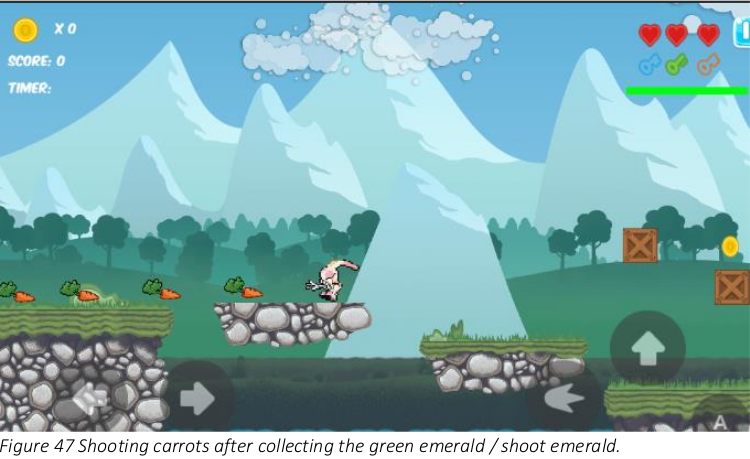Awesome Student Projects of 2021
Each year I supervise final year student projects for different degree programmes, often not directly related to my research interests. This way I get to see and learn about all the awesome things our students are up to.
Below are my personal favourites from 2021 in no particular order. All images are directly taken from the dissertations or demos and belong to the students. The coolest (and most successful) projects are those proposed directly by students passionate about a particular topic. If you are a student going into your final year soon I hope that this post will inspire you and help make up your mind about your own direction of travel.
1. Sunnyside
Kehinde Jimoh, BSc (COMP390), with Othon Michail (2nd)
A 2D platformer game developed in Unity and Visual Studios 2020 with C#. Kehinde produced an incredibly polished game, with several levels, original graphics and sound, installable on android. Great fun!
The plot of the game is centred around a courageous bunny who is playable by the user. The main character's goal is to gather the 7 Spirit shards in order to summon the Holy Carrot; a treat which will fulfil all the bunny’s desires. For the main character to reach her goal, she will have to traverse through a series of worlds (Level Platformers) to achieve this.

2. Evaluating the Efficacy of Deaf Accessibility Features in Video Games


Sam McParland , with Othon Michail (2nd)
In this student-proposed project, Sam created a 1st-person shooter game and used this to evaluate deaf accessible features, ultimately to make recommendations for game developers. A particular focus was on accessibility features relating to environmental sound, for example where and from what direction an incoming object is approaching (e.g an arrow).
The game is made to be played by participants in a study, and to automatically collect data for assessing the efficacy of the features implemented. The data gathered suggests that the accessibility features implemented in the created game are, for the most part, a successful replacement for sound in the aspects analysed. Future game developers may want to investigate the features detailed in the project as a starting point for deaf accessibility features in their upcoming games
3. Mobile Rubrik’s Cube solvers
David Jackson, and Ashley Jefford, with Stuart Thomason (1st)
We had two equally impressive projects implementing mobile apps for interactive cube solving. Ashley wrote one for IOS in XCode (Swift) and David used Kotlin/Java/C++ to produce an app for Android.
Both apps were really slick, and allowed a user to input any RC configuration by taking picture(s) of the cube. Then a solution of 21 or fewer turns is provided, alongside a solution walkthrough, to take the user through each turn.


4. Heckenbush

Elvis Rodrigues, BSc (COMP390), with Stuart Thomason (2nd)
Conway's game of Heckenbush is a game in which players alternately remove branches. The player who last moves wins the game. Usually, the graph has one edge on the "ground" and if you cut a branch then this removes all descendants (which fall to the ground). Elvis used Java's JFrames to implement this game so that a human player can play against a human or AI opponent.
5. Location via image of the night sky
Renbin Sun, MSc (COMP702), with Konstantinos Tsakalidis (1st)
This was a student suggested project aiming to develop a technique to identify the location of a satellite. This was achieved by first removing noise from the image, extracting the location of stars, then calculating their relative positions by means of triangular matching which allows to look up the satellites location from publicly available star maps. Different algorithms for removing noise and star point extraction have been implemented and compared for their suitability in this context.

6. A Privacy Conservative Buddy Pairing System

Nivedit Gupta, Albin Vincent, Rufus Walkden, MSc Group project (COMP591), with Ullrich Hustadt (2nd)
There are always students who aren't so outgoing and struggle to make new friends or people to discuss course materials with. We would like to offer these students an optional buddy pairing system that would pair up two (or more) students who signed up and gets them in touch.
The team produced a web-app based on Angular and MongoDB to pair up students looking for study buddies. It is easy to use, GDPR conform and designed to not store any info longer than necessary.
7. Personalised risk modelling tool to predict respiratory problems in children
Samuel Ellis, MSc (COMP702), with Katie Atkinson (1st)
Collaboration with Alder Hey Children's Hospital in Liverpool. This project aims to leverage machine learning approaches to develop a personalised risk prediction tool that helps to identify paediatric patients that are likely to develop respiratory diseases early. The project also intends to identify important predictive risk factors that can be included in future research studies predicting respiratory disease development in children.
